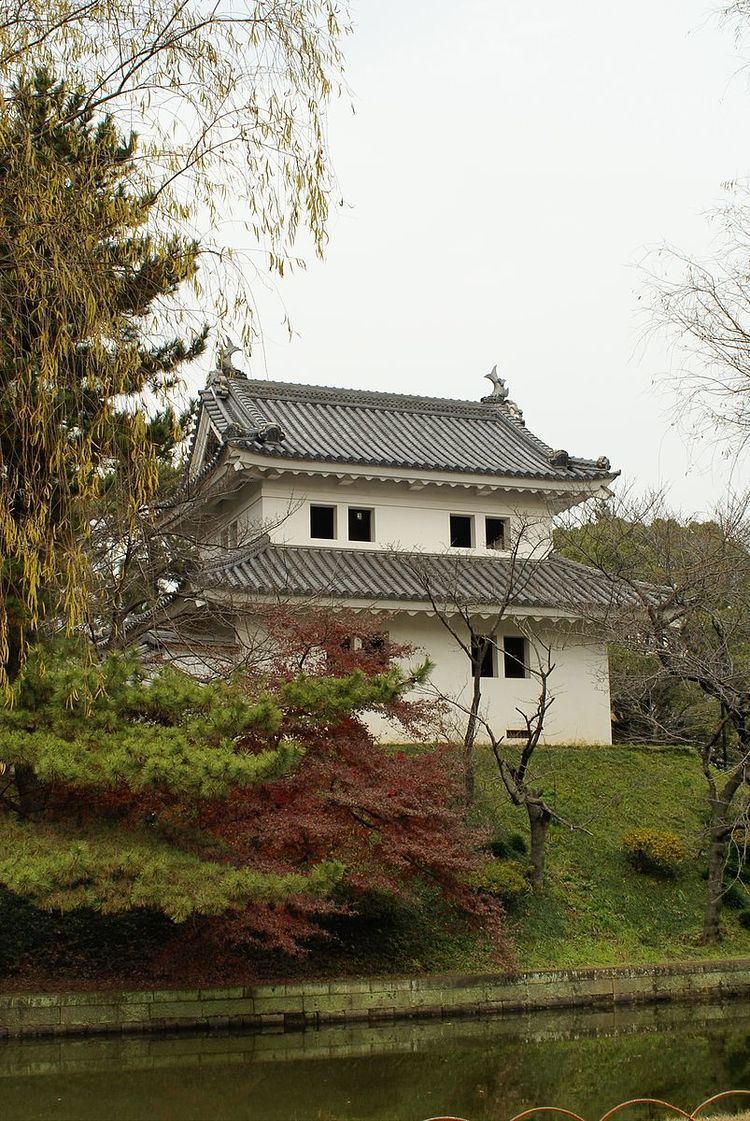 | ||
Tsuchiura Domain (土浦藩, Tsuchiura-han) was a feudal domain under the Tokugawa shogunate of Edo period Japan, located in Hitachi Province (modern-day Ibaraki Prefecture), Japan. It was centered on Tsuchiura Castle in what is now the city of Tsuchiura, Ibaraki. It was ruled for much of its history by the Tsuchiya clan.
Contents
History
During the Sengoku period, the area around Tsuchiura was controlled by the Oda clan, who were later destroyed by the Yūki clan. After the Battle of Sekigahara, and the establishment of the Tokugawa shogunate, the Yūki were relocated to Fukui Domain in Echizen Province and a portion of their vacated domain was given to Matsudaira Nobukazu as a reward for his rear-guard action in the Battle of Sekigahara. His son, Matsudaira Nobuyoshi, laid out the foundations of the castle town and built a number of gates on the Mito Kaidō highway linking Edo with Mito.
However, the Matsudaira were transferred to Takasaki Domain in Kozuke Province and were replaced by Nishio Tadanaga, who received Tsuchiura as a reward of his services in the Siege of Osaka. His son, Nishio Tadateru, was transferred to Tanaka Domain in Suruga Province.
In 1649, Kutsuki Tanetsuna became daimyo, and was followed by his son Kutsuki Tanemasa until the clan was transferred to Fukuchiyama Domain in Tamba Province.
Tsuchiya Kazunao, a wakadoshiyori under Tokugawa Iemitsu received Tsuchiura next. He later became a rōjū. He was followed by his son, Tsuchiya Masanao, who was subsequently transferred to Tanaka Domain in Suruga Province. The domain was then awarded to Matsudaira Nobuoki, the 5th son of Matsudaira Nobutsuna, who held the post for only five years before being appointed Osaka jōdai.
Tsuchiura was then returned to Tsuchiya Kazunao, who had served as rōjū during the tenure of four shoguns, during which time his revenues had increased to 95,000koku. The Tsuchiya ruled Tsuchiura for the next ten generations until the Meiji restoration. The final daimyo, Tsuchiya Shigenao, was adopted into the clan from the Mito Tokugawa clan, and was a younger brother of the last Shogun, Tokugawa Yoshinobu.
The domain had a total population of 12933 people in 2918 households per a census in 1741; however, in a census of 1834, the castle town of Shimodate had a population of obly 1637 people in 364 households.
Holdings at the end of the Edo period
As with most domains in the han system, Tsuchiura Domain consisted of several discontinuous territories calculated to provide the assigned kokudaka, based on periodic cadastral surveys and projected agricultural yields. This was especially the case with Tsuchiura Domain, whose holdings were scattered in many locations.
